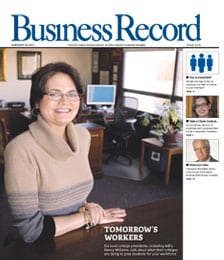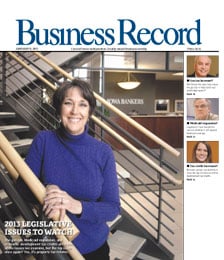Enterprise Products is a well-oiled machine

Dear Mr. Berko:
I want to invest about $5,000 in a dividend growth stock. Not a company that increases its dividend a penny or two a year, but a company that can increase its dividend by 5 percent to 10 percent a year. Enterprise Products was suggested to me and I would ask the favor of your opinion on this stock, which I think you own. When you spoke to us here a few years ago, you said you and many of your clients owned this stock. Could you also explain how this company’s dividend is mostly tax-free and how it’s calculated?
T.D., Gainesville, Fla.
Dear T.D.:
Many of my clients and I bought Enterprise Products in late 1998 at $14.75 a share. Way back then, the company generated $739 million in revenues and paid a 32-cent dividend, which provided shareholders with a 2.2 percent current yield.
Today, Enterprise Products Partners LP’s (EPD-$25.25) revenues have increased to $11 billion and a 100-share purchase (split 2-for-1 in 2002) now pays $336 in dividend income and yields 23 percent on our original basis. We still have the stock, which was recommended to us by an old chum who has never had to work an hour in his life, because he is still a trust-fund baby. So I decided to ring him up for an update, because I knew he would give me an objective opinion on this huge integrated provider of natural gas, natural gas liquids processing, fractionation, transportation and storage.
If he can be believed, EPD is poised to be one of the best-performing master limited partnerships over the next three to five years. He tells me that most issues in this diversified natural gas industry are doing quite well and will continue to report higher profits.
Our friend suggests that EPD has some of the best management talent in the business. President Bob Phillips and Chairman Dan Duncan are classy, quality, hard-charging, knowledgeable and respected professionals. They’ve worked smart and hard to improve EPD’s net profit margins, earned impressive returns on internally developed projects and have cleverly streamlined operations. This management team will reap production increases in the Gulf of Mexico, its Rocky Mountain properties and its on-shore Texas patches, which are among the richest producing regions in the United States. My source suggests that EPD’s hard assets are quite stable, and points out that even in the company’s recent cyclical trough, it produced a strong and positive cash flow. And EPD’s cash flow is quite impressive.
When the company’s stock was recommended in 1998, the cash flow was a miserly 42 cents a share. Just seven years later, that cash flow (split adjusted) has exploded fivefold to more than $2.10 a share this year. Our friend suggests that EPD’s assets (storage facilities, fractionation plants, pipelines, producing properties, etc.) are strategically focused on the United States. Therefore, the company is positioned to fully participate in growth of the North American natural gas industry. This is why he thinks revenues will grow more than 10 percent in 2006 to $12.1 billion and all the way to $15 billion by 2009. This is also why he thinks the EPD dividend will grow by about 10 percent annually to an estimated $2.55 by 2009.
EPD is the nation’s largest MLP. This structure eliminates most of the federal corporate income tax exposure. In a sense, the company passes off its depreciation to the shareholder so that about 90 percent of the dividend is considered return of capital and not taxable.
However, the portion of the dividend that is not taxable reduces your cost basis every year by that amount. So if you bought 100 shares of EPD at $25 and received a $1.68 dividend, which is 90 percent nontaxable ($1.51), it reduces your cost basis to $23.49 ($25 less $1.51), and you pay taxes on the remaining 17 cents. If EPD pays a $2 dividend in 2006 and 90 percent is not taxable ($1.80), then your new cost basis is $21.69 ($23.49 less $1.80).
I’d be inclined to buy 200 shares of EPD at the current price, which has a comfortable yield of 6.7 percent. My friend and I believe this dividend will continue to grow each year. We both believe that net income could rise from this year’s $400 million to more than $650 million in the next four years. We both believe that operating margins, net profit margins and return on capital will increase nicely, and we both think that long-term debt will decline by about 10 percent to about $3.5 billion. EPD is a good dividend growth stock, and we both believe that as its dividend grows, its share price will grow accordingly.
Please address your financial questions to Malcolm Berko, P.O. Box 1416, Boca Raton, Fla. 33429 or e-mail him at malber@adelphia.net.
© Copley News Service







